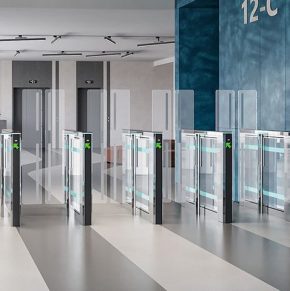
Improving office and field communication in construction
Teamwork between the office and the field in construction starts with great communication. The two must share critical information in a timely fashion to get the best results. The office needs data from the field to understand how the project is going.
Information about costs, productivity, labor and materials are all essential for project managers. Field staff rely on the office to communicate safety alerts, as well as feedback on how to manage costs. When the field and office work well together, projects complete on time and within budget. The alternative can result in wasted time and money, plus a lot of stress for those involved.
This blog discusses how contracting firms can improve the ways that they communicate. We’ll look at some older methods and the disadvantages associated with them. Then, we’ll look at some new and improved ways of achieving better communication. By the end, you’ll see how great communication will help you improve the flow of your next project.
Traditional Communication Methods
While communication is key in project management, it has not always been a primary focus on construction sites. In the past, it was common for office and field staff to meet once or twice weekly.
They might exchange progress and cost reports, analyze productivity and relay design information. While these meetings can be beneficial, relying on them as a sole means of communication is a mistake. Infrequent communication creates delays in addressing cost and productivity problems. Here are some types of delays caused by poor communication.
- Irregular sharing of costing data prevents the office from keeping track of budgets.
- Poor communication about material usage causes supply chain backlogs.
- Lack of feedback from field staff prevents managers from finding needed process improvements.
Irregular meetings can foster other disconnects between staff at the same firm. Field workers feel like they lack a platform to express their ideas and concerns. Office staff become frustrated at the lack of information available to them. Project managers find themselves unable to respond to the changing needs of field workers.
It’s time to change the way we organize and communicate in the construction business. It is no longer good enough for teams to meet once a week and then go back to their business. Building a stronger link between office and field is paramount to success in the construction business today.
New technology for field/office communication
There are many innovative ways to improve communications between the field and office. The most important step is to generate consensus on what methods should be in use. Then, field and office staff can train on how to take full advantage of the new technology.
Here are some methods that are currently in use in the industry:
1. SaaS Technologies – Software companies are creating products to help construction firms communicate. Software products leverage the fact that we all carry smartphones or tablets with us. They provide an integrated platform where field employees can report on key project elements. The reports are available to office staff who can analyze them and make better decisions. The entire process works in real-time, with no delays.
2. Tele-meeting/Video Conferencing – These solutions help to drive down costs of meetings. Quick, daily meetings between field and office staff keep everyone on the same page. These are much easier to manage when folks don’t all have to drive to one location. Field and office staff build better rapport from regular interactions. Thus, they do a better job of working as a team to solve problems and innovate.
3. Automated Reporting – This feature comes with many SaaS products, but is worth a mention on its own. Field workers receive timed requests for updates on key metrics. Those updates will be processed through technology that organizes them into reports. Reports are automatically generated and sent to the office. Now, managers can use this new information to make decisions that save time and money.
Now is the time to put in place new technologies that ease communication at your contracting firm. Office staff need constant reporting and new data to make better business decisions.
Field staff need ways to receive and act on the directions provided by office staff. This relationship leads to success and fosters a strong team dynamic. Firms with great communication will bulldoze their competitors in the construction industry.
Latest news

17th April 2025
Nuaire shares expertise at Specifi Mechanical Services events in 2025
Indoor air quality and ventilation manufacturing specialist Nuaire is pleased to be exhibiting at the Specifi Mechanical Services events once again in 2025.
Posted in Air Conditioning, Articles, Building Industry Events, Building Industry News, Building Products & Structures, Building Services, Exhibitions and Conferences, Facility Management & Building Services, Heating, Ventilation and Air Conditioning - HVAC, Restoration & Refurbishment, Retrofit & Renovation
15th April 2025
West Fraser: CaberDek earns top marks from Home Counties carpentry specialist
A specialist carpentry sub-contractor covering housing sites across a large swathe of the Home Counties has come to value CaberDek from the West Fraser range for a variety of reasons: not least because the high quality panel product doesn’t destroy his operatives’ electric saws!
Posted in Articles, Building Industry News, Building Products & Structures, Building Systems, Case Studies, Restoration & Refurbishment, Retrofit & Renovation, Roofs, Timber Buildings and Timber Products, Wooden products
15th April 2025
GEZE: The Role of Access Control Systems in Enhancing Building Safety
Jane Elvins, Specification and Business Development Manager at GEZE UK, delves into the role of access control systems in enhancing building safety…
Posted in Access Control & Door Entry Systems, Architectural Ironmongery, Articles, Building Industry News, Building Products & Structures, Building Services, Doors, Facility Management & Building Services, Health & Safety, Restoration & Refurbishment, Retrofit & Renovation, Security and Fire Protection
11th April 2025
Don’t Do a Dave! It’s Time to Lock FIT Show 2025 in Your Calendar!
It’s that time again – FIT Show is back! You could be forgiven for thinking there won’t be much new to see when FIT Show returns to the NEC from 29 April – 1 May. Wrong!
Posted in Articles, Building Industry Events, Building Industry News, Building Products & Structures, Building Services, Continuing Professional Development (CPD's), Exhibitions and Conferences, Information Technology, Innovations & New Products, Restoration & Refurbishment, Retrofit & Renovation, Seminars, Training
 Sign up:
Sign up: